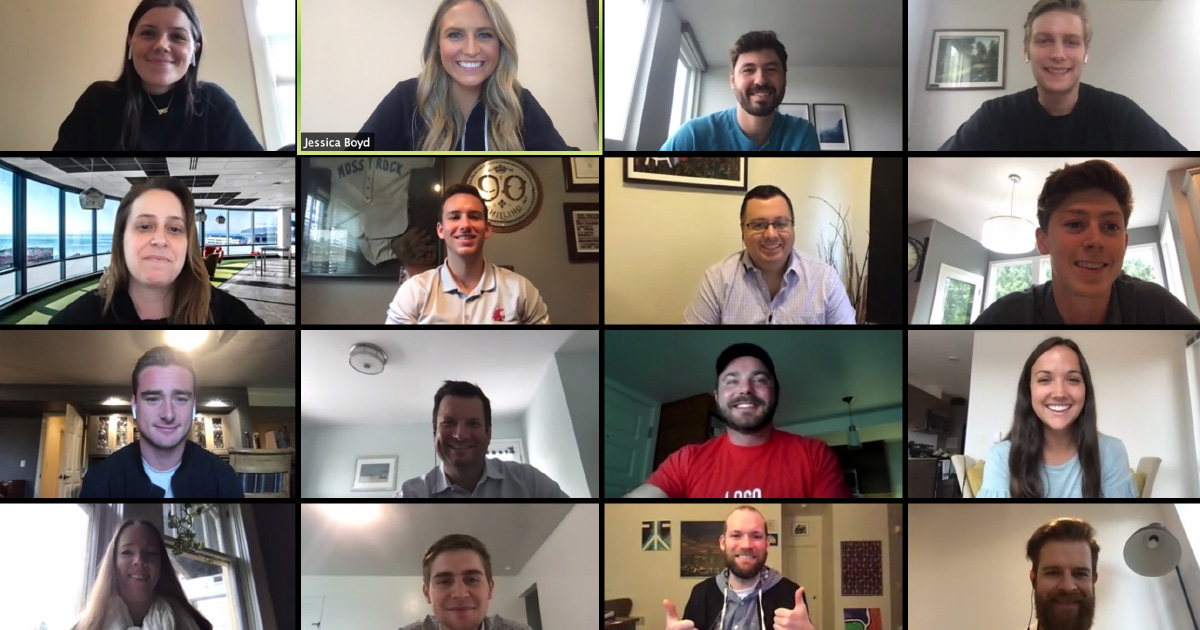While many companies regard training as a required box to tick, others use it to nurture talent and create culture. At Highspot, we took the latter approach.
One year ago, our team launched GROW, Highspot’s three-week new hire training program focused on developing and inspiring the most important aspect of our company — our people. As Revenue Enablement Manager, Learning & Development, it has been incredible to see the impact of GROW as Highspot tripled in headcount over the last year, from forging new connections across roles and levels to driving an 139% increase in the number of reps hitting quota after their third month on the job.
But Rome wasn’t built in a day, and neither was GROW. We have continuously and consciously evolved the program to better serve our learners, company, and customers. Here are five lessons learned along the way that I hope you’ll find useful in making your training program the best it can be.
Enhance Engagement with Multiple Formats
Our brains contain more than 85 billion neurons that form complex pathways. When we learn new things, these paths “communicate” and change — literally rewiring our minds. Neuroscience research suggests that learning is multi-sensory, meaning engaging more than one sense while teaching can help learners process information.
If your training program is chock-full of presentation after presentation, it’s unlikely your trainees will retain the information. Neuroscience aside, we all know that one PowerPoint presentation after another — especially in the current remote reality — would put even the most curious mind to sleep.
To set your learners up for success, include a variety of training formats in your program, from gamified activities to expert speaker “Ask Me Anything” sessions. These different mediums will give your trainees a chance to use different senses as they watch videos, listen to leaders, present mock pitches, and build hands-on projects — ultimately resulting in better engagement, comprehension, and retention.
Keep the Focus on the Customer
All employees, regardless of role or level, benefit from a deep understanding of the customer. This knowledge provides a foundation for why the product or service exists and how their individual work can have a positive business impact.
Ensure that your training curriculum aligns to customer value. Help your learners understand your buyers’ unique pain points and desires, how your tool or service provides an answer, and what their world would look like without your solution. Armed with this knowledge, your sellers will be able to communicate true value, your engineers will be inspired to build game-changing features, and your marketers will create content that hits home.
What’s more, uniting everyone under a shared understanding helps form a culture that values delivering an exceptional customer experience at every turn. And today when customer experience defines business success, a customer-centric culture is imperative.
Win Over Your Learners
Time is precious — and it needs to be invested in wisely. As such, most people need a good reason to commit to a task or activity. Training is no different. Before you can expect to fully engage your learners, you first need to get their buy-in. For every session, show how the specific material connects to the bigger picture. Then, explain why it’s included and why it matters — not in general, but specifically to the trainees.
An often overlooked tactic that can be used to win over learners is to provide opportunities for them to hear from their peers. In a room full of people with diverse backgrounds and experience, there is a treasure trove of knowledge waiting to be tapped. When you know your audience well, you’ll know who has relevant expertise to share with the class around a given topic. For example, if one of your trainees has a product marketing background, during the session on the marketing persona, ask them to share their unique perspective. By enabling your learners to become teachers, they feel a sense of ownership and are able to provide new insights that further underscore the importance of the training.
Gather Feedback to Iterate and Improve
Your market, industry, competitors, and company are evolving every day. In a rapidly changing world, a static training program will quickly become out-dated and irrelevant.
Effective training programs are dynamic, but beware of editing your program for the sake of change alone. Rather, take a strategic approach to evolving your curriculum in a way that keeps your learners at the heart. The best way to go about this is to go directly to the source — because why make assumptions when you can get the facts? Ask trainees what’s working, what’s not, and how you can improve. Do this routinely in a systematic way with a defined cadence and various feedback formats — including surveys, casual check-in points, deep-dive focus groups — and you’ll have an agile program that evolves your trainees, company, customers, and the current times.
From Obligation to Opportunity
When you invest in your training program, you invest in your people — and no investment could be more valuable. Our first year of GROW has yielded vast benefits, from happy employees to customer satisfaction. And it’s only just beginning.
For more information about #HighspotLife, visit our Careers and Culture page.




